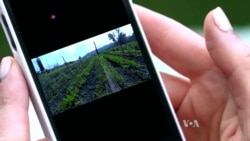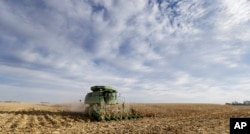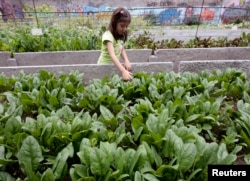When it comes to food, it's said that we are what we eat. And lately, what we eat is getting fresher and healthier. The farm-to-table movement in America has been gaining momentum in the culinary world, catering to a growing appetite for responsibly sourced meals made with fresh, local ingredients.
Now, with the help of some new food startups, consumers can follow the farm-to-table cycle and learn about ingredients' origins while simultaneously fostering connections with the farmers who produce them. These startups are garnering the attention of investors like Manuel Gonzalez, Managing Director at Rabobank, which specializes in financing food, agribusiness and beverage companies.
"I think it's very clear people want good food that's sustainable, that's traceable and is good for them," said Gonzalez, who founded FoodBytes, a food and tech conference that brings investors and food startups together.
Adam Smith was in attendance at a recent conference. He co-founded Kakaxi, which pairs farm-monitoring devices with a mobile platform to connect farmers and consumers.
"Kakaxi is a social farming platform that we're building to bring the story of food production to the table," Smith said.
How it works
Farmers install the Kakaxi device in their fields to harvest crop and weather data. Built-in sensors measure conditions such as temperature, humidity and sap flow, while an onboard camera captures images that consumers can connect to and view, via the Kakaxi app.
"Seeing how food is transformed from nothing into something is a miraculous story," Smith said. "I feel like it's something the consumer doesn't really get to understand. When we see food at the supermarket, that story is gone."
Kakaxi works with community-supported agriculture groups, or CSAs. CSAs provide produce directly to consumers from the farms where it is raised. Most CSA farms are small operations with limited customer outreach tools.
Smith envisions Kakaxi as a way for farmers to get direct feedback from CSA members, along with advertising they might not otherwise be able to afford.
"We're not promising 5% increase in yields if they use it, but what they all need is better ways of generating content and marketing assistance," he said.
Small farms, big city
Another startup shining the spotlight on small farmers is Masienda. For founder and CEO Jorge Gaviria, there's no mistaking where the best corn comes from.
"Mexico is really the birthplace of corn," Gaviria said. "It's home to the most bio-diversity of the species in the world."
The chance to experience that diversity was limited though, as the premier cultivators of heirloom corn were small village farmers with no access to a wider distribution network. Masienda partners with subsistence farmers in Mexico to purchase their surplus and distribute it to some of the best restaurants in New York, satisfying palates while providing economic profit for the original purveyors.
"You have about 3 million small holder farmers in Mexico and since at least NAFTA and well before that, with sort of the globalization of food, there were diminished opportunities at home for real sort of economic, thriving enterprises," Gaviria said. "We want to provide as much access as possible by adding value to these products, really getting it back in the hands of folks who had something to say about this in the first place, which is the Latino population."
For small farming operations, connecting with today's busy, on-the-go consumer is crucial for business.
"Looking at a digitized mobile consumer, if we can make the connection to the farm in that format, then it actually has a future," Smith said.









